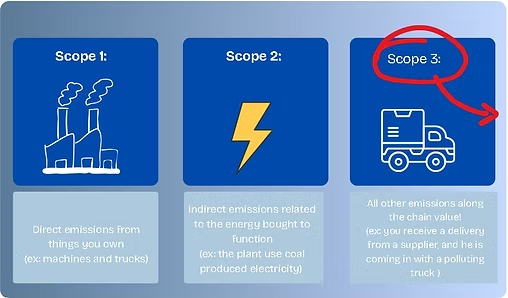Carbon credits are permits that allow the emission of a specific amount of greenhouse gases (GHGs). Established during international agreements like the COP 26 convention, these credits are allocated to countries, which then distribute them to their national companies. Each company must stay within its allocated limit, ensuring that overall GHG emissions are capped.

While carbon credits represent a significant step toward reducing global GHG emissions, they are not sufficient to return emissions to pre-industrial levels. Some companies may also face challenges in reducing emissions in certain sectors, making additional measures necessary.

When looking at the different 3 scopes of possible GHG emissions, some are difficult to control!
The Voluntary Carbon Market and Carbon Offsetting
Thus, in addition to these national carbon credits, exists a voluntary carbon market where companies can engage in carbon offsetting. This process involves purchasing carbon credits that represent a certain quantity of carbon dioxide (CO2) and other GHG removed from the atmosphere by other entities.

These carbon offsets are generated by ecosystems that naturally absorb GHGs, such as forests, mangroves, and kelp. When these ecosystems are located in coastal or marine areas, they are referred to as blue carbon projects.
Ecosytems such as mangroves, salt marshes or kelp forest are known to store a lot of atmospheric carbon!
The amount of removed carbon is then quantified using specific methodologies. These removals are certified as carbon credits, allowing them credits to be sold in the voluntary market.
Benefits of Carbon Offsetting

Companies aiming for net-zero emissions or seeking to enhance their environmental impact can purchase these carbon offsetting credits. By doing so, they can effectively reduce their reported emissions, as the carbon removed is subtracted from their total emissions.
This approach not only helps companies meet their sustainability goals but also provides essential funding for restoration and conservation projects. By investing in these initiatives, companies can support the health of ecosystems while offsetting their own emissions.
